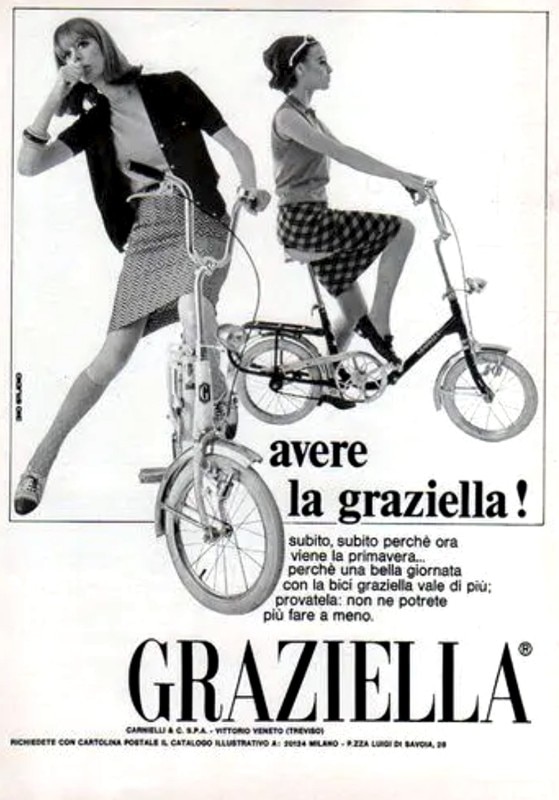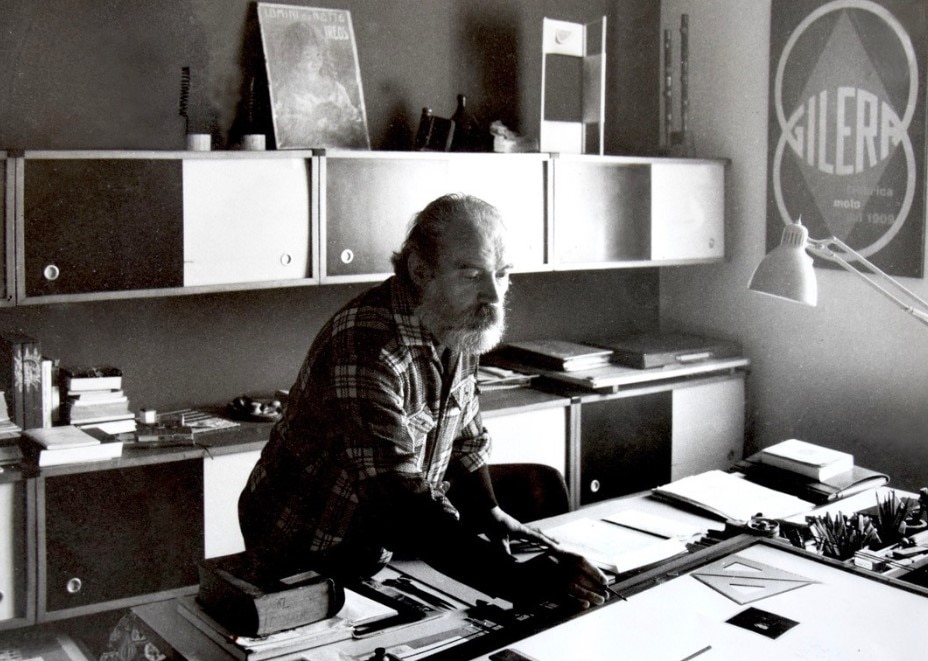The Graziella bicycle embodies the essence of freedom. It exudes an air of both elegance and jauntiness. It is practical, lightweight, and easy to handle. It seamlessly answers the dreams and needs of its era. Created in 1964 by designer Rinaldo Donzelli and produced by the Teodoro Carnielli factory in Vittorio Veneto, Treviso, Italy, the Graziella was never just a means of transportation. With its innovative design and practicality, it revolutionized the cycling world and became a symbol of nonconformity and modernity.
The Graziella's wheels are significantly smaller than traditional models, measuring just 21 cm compared to the usual 60-70 cm. Its sturdy folding frame, featuring a central hinge and no horizontal top bar, was a groundbreaking innovation. This design allowed the Graziella to be easily folded and stored in tight spaces and even transported in a small car. The padded seat and easily removable handlebars further enhance its practicality.

The Graziella quickly became one of the best-selling bicycle models during Italy's economic Boom Years. It sparked a cultural shift similar to the impact of the Vespa and Lambretta motor scooters in post WWII Italy − making the dream of easy and accessible mobility a reality. The Graziella was particularly popular among women, who embraced the euphoric atmosphere of the early 1960s and the newfound ability to move swiftly around their home or workplace environments.
Much like the 1950s Mirella sewing machine, the Graziella's name was carefully chosen by Carnielli's Technical Department. It is a name that was both widely popular and rich in cultural significance. Derived from the Latin name of the imperial age, "Graziella" means "graceful, pleasant, comely," and carries strong Christian connotations, being linked to the concept of divine grace.

Even the color of the Graziella became one of its distinctive elements: available in classic creamy white or a delightful ultramarine blue, the bike came with a tube of touch-up paint, featuring a small brush built into the cap. This not only helped maintain the bike's pristine appearance but also added a touch of elegance and meticulousness that contributed to the Graziella legend. If, at the time, bikes were considered a humble means of transportation, the Graziella marked a significant leap in their status.
The Graziella was particularly popular among women, who embraced the euphoric atmosphere of the early 1960s and the newfound ability to move swiftly around their home or workplace environments.
Bikes became the preferred choice of affluent youth, quickly spreading beyond Italy to conquer markets in France, Germany, and South America. And after one of the era's sexiest and most popular divas was photographed riding a Graziella in Paris, the Teodoro Carnielli bike was even marketed in advertisement as "Brigitte Bardot's Rolls Royce.”

The Graziella's allure also captivated the nonconformist spirit of Salvador Dalí. The famous Surrealist painter, sculptor, and filmmaker was often seen carrying his works standing right next to his beloved Graziella.
Over its sixty-year lifespan, the original model designed by Rinaldo Donzelli has undergone numerous refinements. In 1971, a matching luggage rack was added, featuring two horizontal tubes of equal length joined by a semicircular tube.

Of course, there was a period when the Graziella seemed destined to be a cult object for collectors and vintage bicycle enthusiasts, a noble example of modernism linked to a specific world and era. However, the growing emphasis on sustainable mobility has brought folding bicycles back into vogue, recognizing the Graziella as a pioneering example in this field, with events and rallies dedicated to its legacy attesting to its enduring significance in Italian popular culture.
The Graziella myth is the result of a perfect combination of technological innovation, attractive design, and the ability to interpret the social changes of a time. Today, the Graziella continues to evoke nostalgia for the "age of innocence" but also a sense of authentic admiration and esteem.












